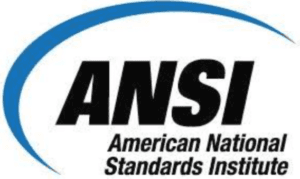ANSI vs. ASME Flanges: Which is the Right Choice for Your Industrial Application?
Before reanding, what you shold know…
ANSI was founded in 1918. ANSI’s main responsibility is to supervise US-offered standards for products, systems, services, and processes. Founded decades before ANSI in 1880, ASME is among the first set of guidelines meant to grow the current systems of business.
While several flange types have identical ANSI and ASME standard flanges, in some cases they can even be used alternately. Though they are both used to set engineering standards and can be occasionally swapped, ANSI flanges are not the same as ASME flanges.
In various industrial applications where a reliable and secure connection is required, the selection of ANSI flange and ASME flanges come into action. Flanges are used as these connecting pieces of pipes, valves and other equipment to achieve leak free and uncompromising operations. The total performance and safety of the entire system depends on the choice between ANSI and ASME flanges.
The focus of this article is to give in-depth analysis and comparisons between ANSI and ASME flanges to equip you with the necessary knowledge in making good choices of the flange type suitable for their various industrial applications. This understanding of the differences, advantages, and application areas of both ANSI and ASME flanges will enable you to make choices that would better suit their functional needs, besides the requirements of conformation to standards and reliability in the long run.
Overview

ANSI Flanges:
The American National Standards Institute (ANSI) a known organization, in the United States that establishes standards across industries.ANSI flanges are designed to adhere to these standards to ensure quality consistency and ease of interchangeability.They are commonly used in industries such, as oil and gas power generation and water treatment processes.

ASME Flanges:
The American society of mechanical engineers, or ASME, is an organization of professional individuals who devise and publish standards for mechanical engineering applications. ASME flanges are made in accordance with ASME documents which specify pressure ratings, materials, dimensions, and manufacturing processes.
The significance of ANSI and ASME as International Standard Organizations cannot be overstated; ANSI and ASME are respected standard bodies that offer guidance and requirements for various products and procedures, across different industries. Their guidelines uphold. Quality in settings while prioritizing safety. Compliance with ANSI and ASME standards is essential for manufacturers, engineers and consumers to guarantee system compatibility, compliance and dependability. The certifications and approvals from ANSI and ASME hold a lot of importance. Play a role in building trust and credibility, for products and services in the international market.
ANSI Flanges: Features, Advantages and Applications
Features and Advantages of ANSI Flanges
There are features and advantages of ANSI flanges for industrial usage.
Scope and Industrial Applications of ANSI Flanges:
Due to their reliability and compatibility, ANSI flanges are used in various industries.
Examples of ANSI Flange Applications:
These examples will also show the versatility of ANSI flanges and how they find wide usage in critical industrial applications needing reliable and standardized connections.
To know more, check it: The Complete Guide to ANSI Flanges: Types, Standards, Sizes, Materials, and Applications
ASME Flanges: Features, Advantages and Applications
Features and Advantages of ASME Flanges
ASME flanges are capable of a great spread of applications in different industrial uses due to some important features and advantages provided by these flanges.
Scope and Industrial Applications of ASME Flanges:
Reliability and compliance with quite rigorous standards make the series of ASME flanges applied in many industries.
Examples of ASME Flange Applications:
These give an example of the various industries where ASME flanges are applied for the proof of their reliability, compliance to industry standards, and versatility for key industrial processes.
To know more, check it: ASME Flanges: A Comprehensive Guide to Selection and Application
Comparative Analysis
Differences between ANSI and ASME Flanges:
Factors to Consider when Choosing between ANSI and ASME Flanges:
Importance of Choosing Based on Specific Industrial Application Requirements:
The selection of the right type of flange-ANSI or ASME-should be done with regard to specific industrial applications for maximum performance and safety, together with the reliability required. By taking into consideration pressure ratings, materials, and industry standards, a chosen flange will ensure compatibility with the system, withstand operational conditions, and minimize the risk of leaks or failures. Every application in the realm of industry has its own special requirement; therefore, selection regarding that requirement is the key to successful operation, minimization of downtime, and holding integrity in the system.
It is always good to bring in experienced engineers or industry professionals to help leverage their knowledge in your application as regards what is best between ANSI and ASME flanges.
How to Choose the Right Flange
Suggestions and Guidance:
Importance of Collaborating with Professional Engineers:
Professional engineers should be involved in the selection of flanges to provide expert advice on the same matter. They have vast experience in industry requirements, types of materials, and methods that should be followed. With them, you are able to reap knowledge that they can perceive your application needs and analyze it down to even recommending the best type, size, and material of the flange. Professional engineers are able to ensure the safety requirements in the process, develop appropriate performance, and reduce any chances of failure or operational issues.
Keep in mind that the selection of the appropriate flange will have a dramatic impact on general performance, safety, and efficiency. Indeed, any investment of time and effort in thorough research, reaping the benefits of industrial standards, and professional guidance is going to result in a well-informed choice that will meet your application needs effectively.
Conclusion
Finally, the advantages and extensive application of ANSI and ASME flanges are discussed in conclusion. ANSI flanges are compatible, interchangeable, and suitable for sizing from small to large in industries including oil and gas, power generation, and water treatment. However, ASME flanges follow strict standards, enjoy higher pressure ratings, and are used across a wide range of industries, including chemical processing, pharmaceuticals, food, and beverage.
The choice between ANSI and ASME flanges depends on consideration of many factors, such as the nature of the application, industry standards, working pressures, material compatibility, and system flexibility, among others. Your call on this matter can well be considered once all these factors have weighed in with the help of professional engineers in order to meet your needs for performance, safety, and reliability.
Author: Lewis Liu
Hello, my name is Lewis Liu, and I’m a professional sales engineer with over a decade of expertise in the flange fittings sector.
I am quite informed about flange selection, installation, and maintenance. I am passionate about providing customers with the greatest solutions for keeping their pipeline systems running smoothly, safely, and dependably.
If you have any queries or concerns concerning flange fittings for your pipelines, whether they are about selection, material choice, specification requirements, or anything else, please contact me at any time. I am dedicated to providing expert advice and assistance to help you make educated decisions and reach your objectives.


